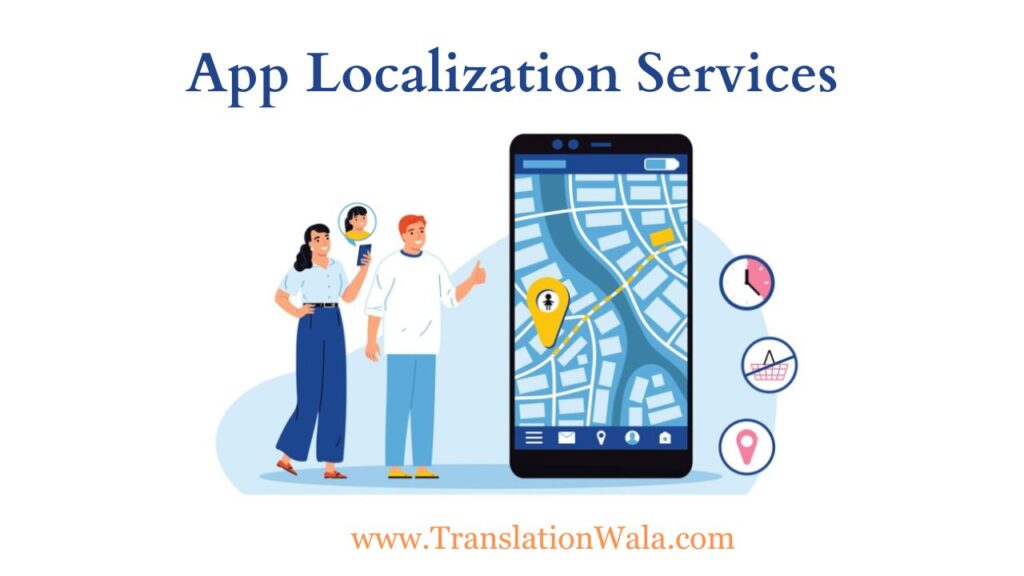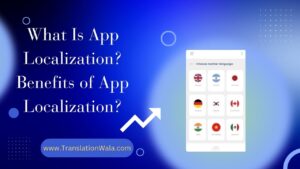App Localization: In today’s globally connected world, getting your app in front of people all over the world could be the key to huge growth. But adapting your app isn’t enough on its own. Localization, or changing the app’s content, features, and look to fit different cultures and user tastes, is what makes it truly successful.
This blog goes deep into the world of App Localization, showing how to make user experiences that are smooth across countries and languages. Get ready to let the world know about your app!
Understanding the Power of Localization
Localization is more than just translating words word for word. It’s about making changes to your app so that it works with the devices and languages of the people you want to use it. Among these are:
- Language: All text needs to be translated, such as UI elements, buttons, error messages, and marketing materials. Make sure it is correct, flows naturally, and fits with the culture.
- Currency: Costs, prices, and in-app payments should be shown in the local currency.
- Date & Time Formats: Change the date and time to the style used in the area to avoid misunderstanding.
- Design & Layout: Think about how different cultures like their colors, pictures, and style features to look.
- Legal & Regulatory Compliance: Take into account the laws in each market about data safety, material limits, and other issues.
By investing in a thorough localization process, you’ll benefit from:
- Increased User Engagement: When people use an app in their own language and culture, they feel more at ease and interested in it.
- Improved Conversion Rates: Localized apps usually have higher conversion rates because users have a better idea of what the app is for and how it works.
- Enhanced Brand Reputation: Localization shows that you care about giving users from all over the world a good experience and that you value different cultures.
- Market Expansion: Reach new people and open up new markets, which will help your business grow and make more money around the world.
Choosing the Right Localization Strategy
It is very important to pick the right translation approach because there are many languages and cultures to think about. You can do any of these:
- Professional Translation Services: Work with professional translation services and translators to get accurate versions that take into account different cultures.
- In-House Localization Team: Get people on your own team who are fluent in multiple languages and who understand other cultures.
- Crowdsourcing Platforms: Crowdsourcing platforms can help you with specific jobs, like changing app titles or user-generated content.
It depends on how complicated your app is, how much money you have, and who you want to use it. Before making a choice, think about things like the amount of material, the time frame you need, and the level of professional knowledge.
Also Read: Preserving Heritage: The Strategic Role of English to Malayalam Translation in Global Communication

Key Steps for Seamless Localization
Let’s get down to the specifics of the translation process:
- Identify Target Markets: Pick out the areas you want to reach based on their language needs, possible users, and user data.
- Conduct Market Research: Look at the local trends, culture norms, and user tastes in each target market.
- Gather Content & Assets: Put together all of the app’s information, user interface elements, marketing materials, and any other media that is important.
- Choose Localization Tools & Partners: Based on your plan and budget, choose language partners, management systems, and tools.
- Translate & Localize Content: Make sure that the versions are correct and take into account different cultures by changing the times, currencies, phrasing, and design elements as needed.
- Testing & Quality Assurance: Thoroughly try the translated app with people who speak the language to find and fix any problems with the translation or the way it works.
- Deployment & Monitoring: Launch the translated app in the areas you want to reach and keep an eye on success data and user comments.
Beyond Translation: Cultural Considerations
Remember that localization is more than just translation. Keep in mind:
- Humor & Slang: Stay away from jokes or slang that could be hard to understand or could hurt people.
- Color Symbolism: In different countries, colors can mean different things. Make a smart choice to avoid misunderstandings.
- Religious & Social Sensitivities: Be aware of cultural sensitivity and stay away from images or material that could be upsetting.
- Number Systems & Measurements: Change the way you measure things, how you write dates, and how you count to match area standards.
Unleashing the Global Potential of Your App
When you embrace App Localization and use these tactics, your app will have a lot of new options. Remember that a localized app is more than just a translated version. It’s an experience that speaks directly to users’ hearts and thoughts and makes your app stand out in the global app market.
So, don’t wait to start the process of localization. You’re about to find out how rewarding it is to reach new groups and build stronger relationships with people all over the world.



